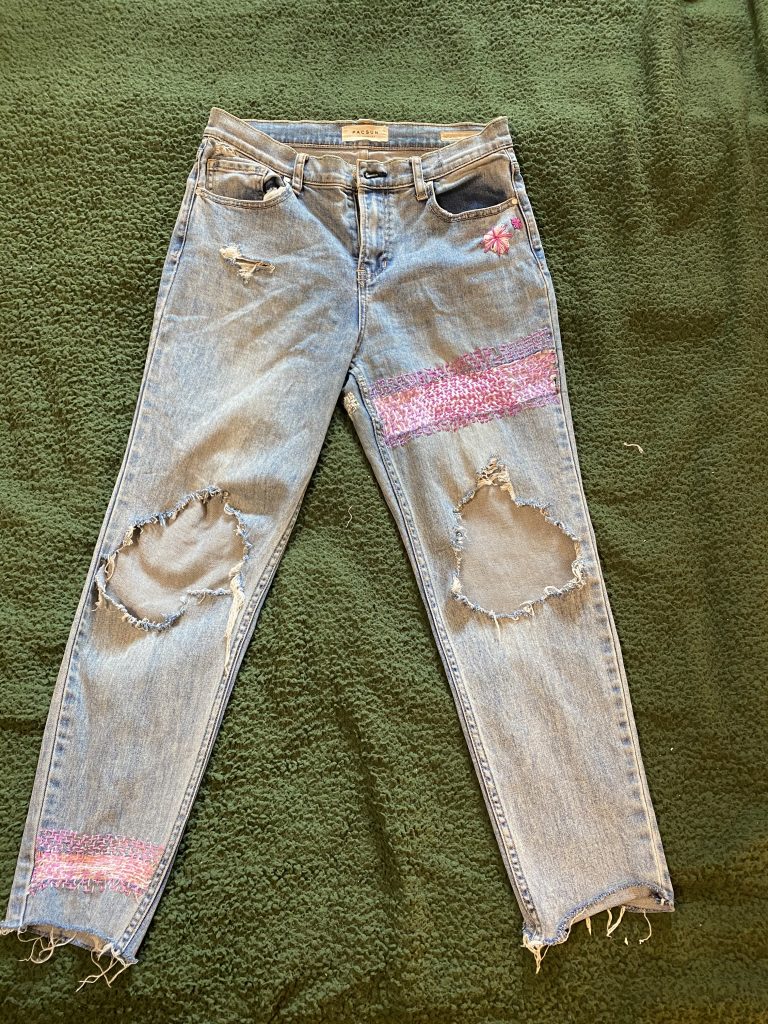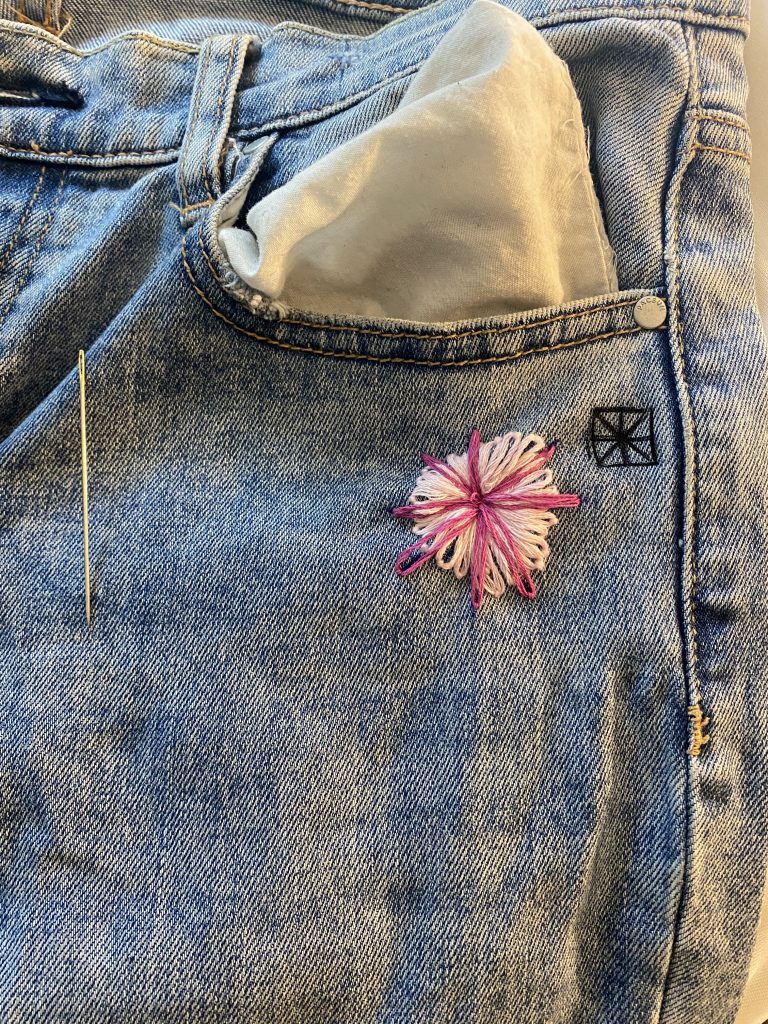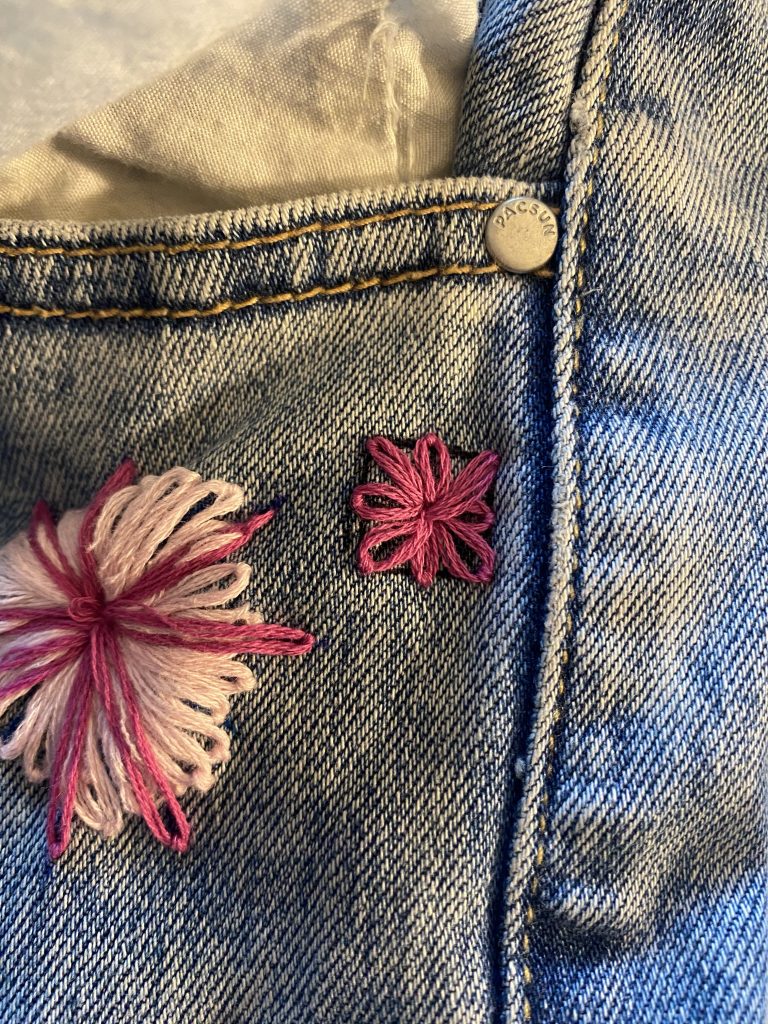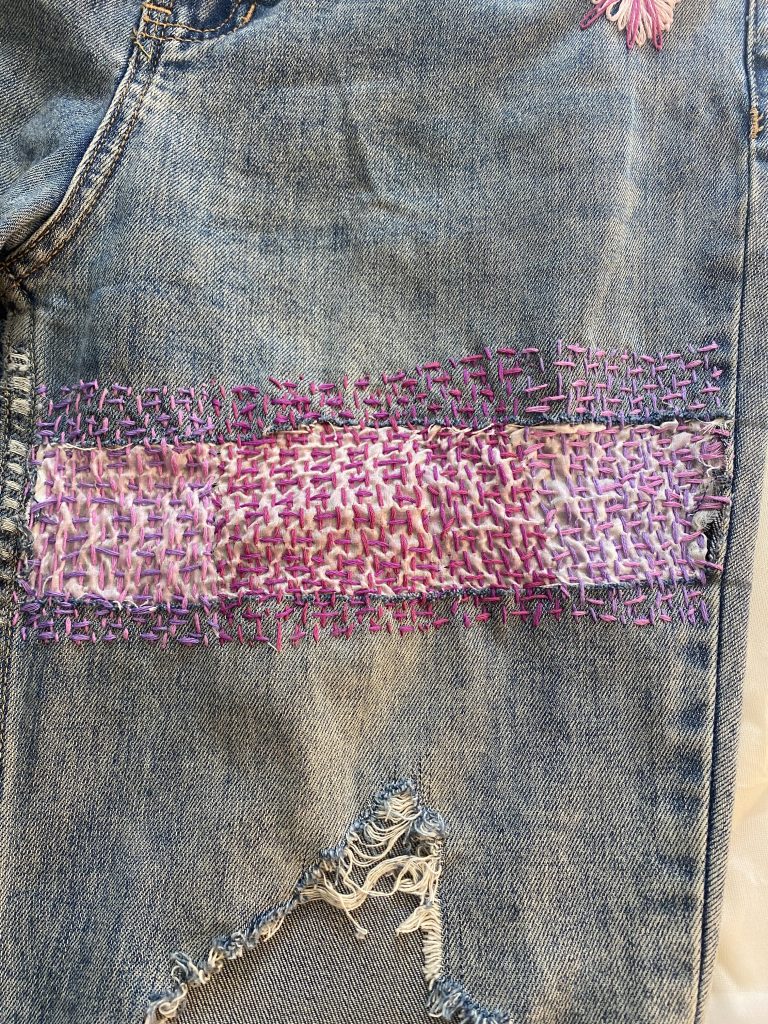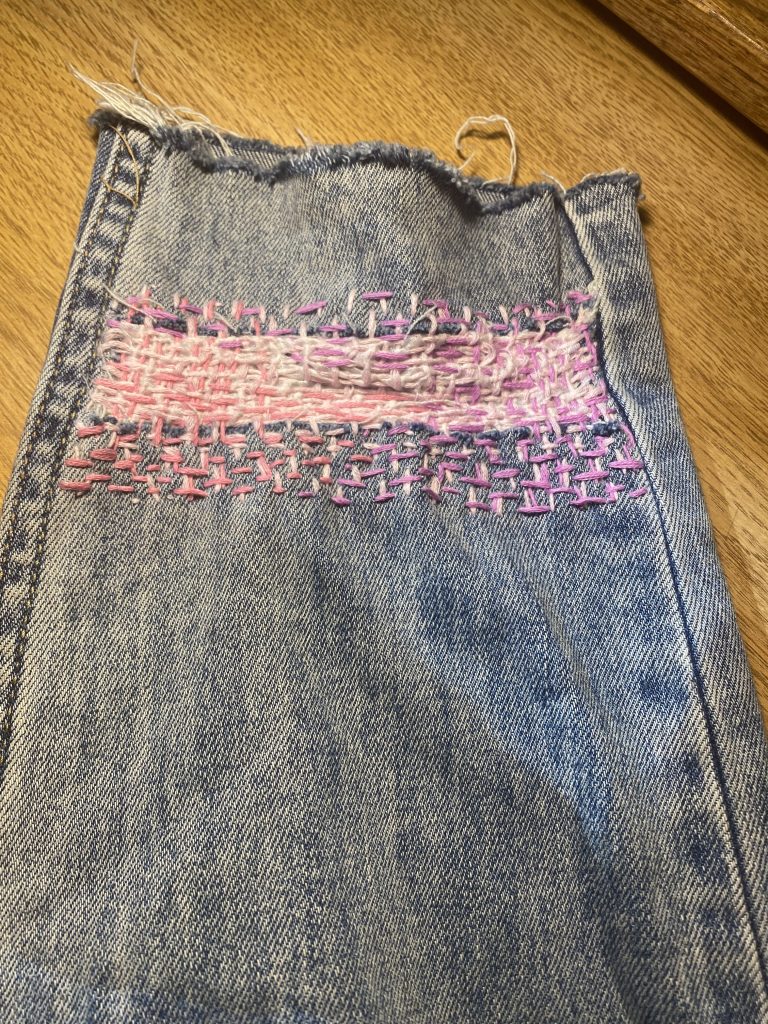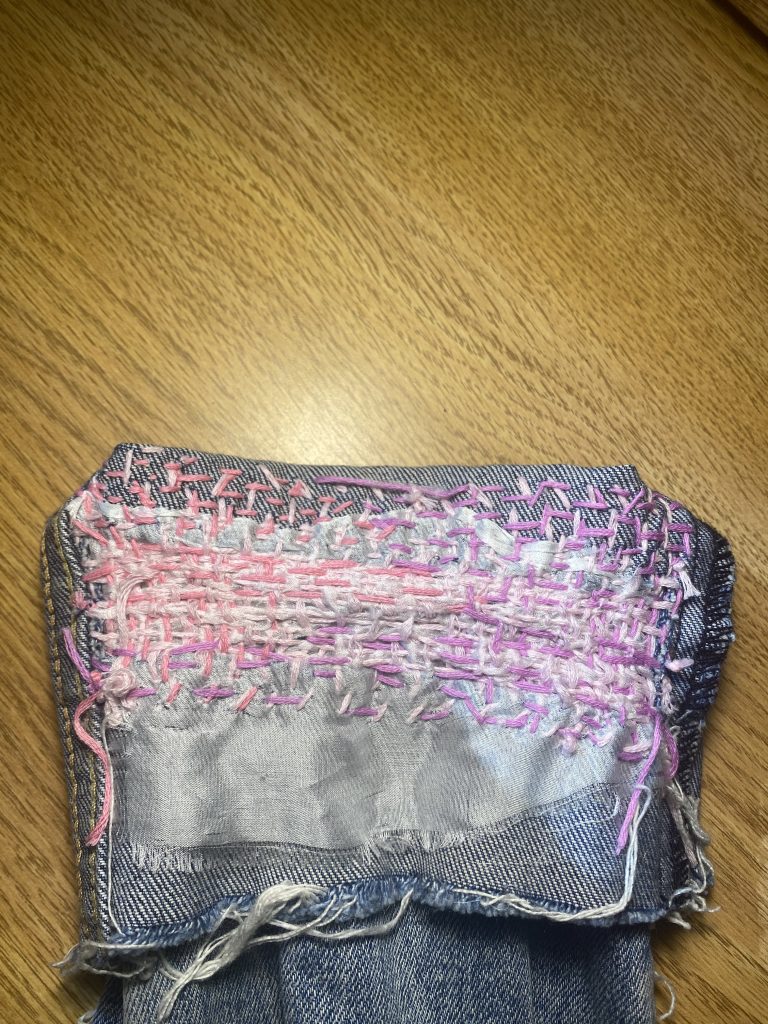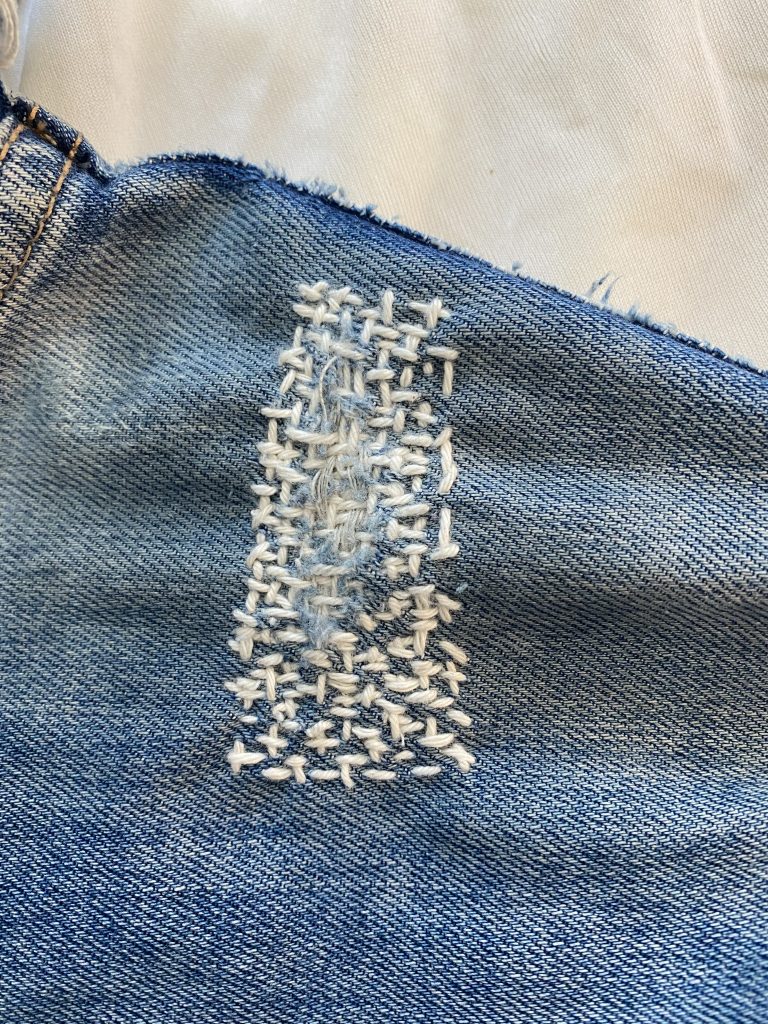By Remi Adeoti
The jeans I decided to work on are a few years old and they started to thin (between the thin) last year until both sides had ripped. From there I decided to play with them, so I distressed them, cut them shorter, and changed the shape of the holes in the knee. These jeans just became practice for me to learn techniques so that I could thrift other jeans and apply what I learned.
For my mending project I used three methods mentioned in class and also found on YouTube. I was interested in the lasy daisy embroidery style, with this method, I struggled with my first attempt. I found that tension was my biggest challenge and that I tend to pull too much. I also feel like this was as frustrating as having a perfect wing with eyeliner. The first petals weren’t the same length and I could tell so I kept adding more but it never ended up what I intended it to look like/ symmetric. I tried again but instead of just drawing lines to follow I drew a box and used a ruler hoping it would be better, which I feel it was.
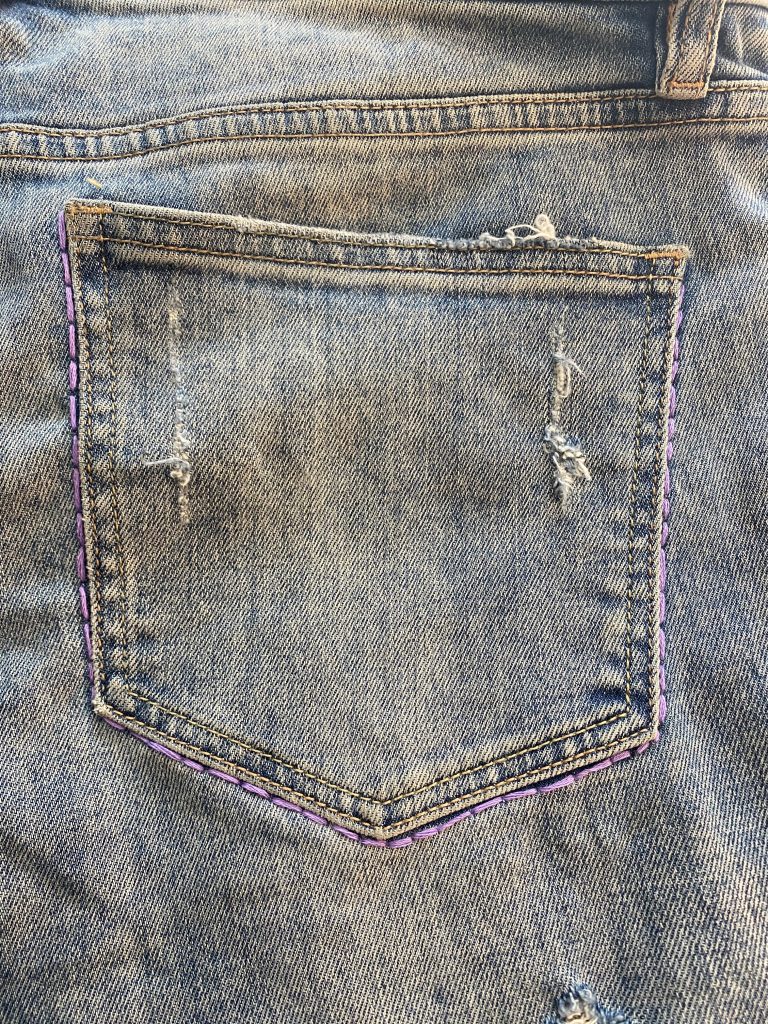
The second method I attempted was the back stitch. This stitch was relatively easy. I added it as a highlight of the back pocket because I had spent so much time on the front that made the back and front of the jeans look like strangers than any two parts that could be related. For the future I would like to continue the sashimi stitching I used in the front so that it resembles a strip of mending that continues to the back of the thing and calf.
The final method I used was Sashiko visible mending which I followed a YouTube tutorial I found on the internet. With this method I tried to play with different pinks and purples and also density of the stitches. My biggest challenge here is that cloth I used to cover the cut in the jeans was very thin and with the tension from the stitching and stretching it started to break down. The repetition of this stitch made me confused and dazed at times, so there are places where I made mistakes. However, I am still satisfied with the results, for next time I would choose a different cloth, take some strands away from the embroidery floss and choose a thinner needle.

